Sonnenbrillen sind mehr als nur ein modisches Statement; Sie schützen unsere Augen vor schädlichen UV -Strahlen und reduzieren Blendung, Aktivitäten im Freien komfortabler machen. Aber haben Sie sich jemals gefragt, wie man Sonnenbrillen macht? Vom Entwerfen bis zur Auswahl der richtigen Sonnenbrillematerial, Die Fertigung beinhaltet mehrere genaue Schritte, um Haltbarkeit und Stil zu gewährleisten.
Dieser Artikel führt Sie hinter die Kulissen, um zu untersuchen.
Entwurfsphase
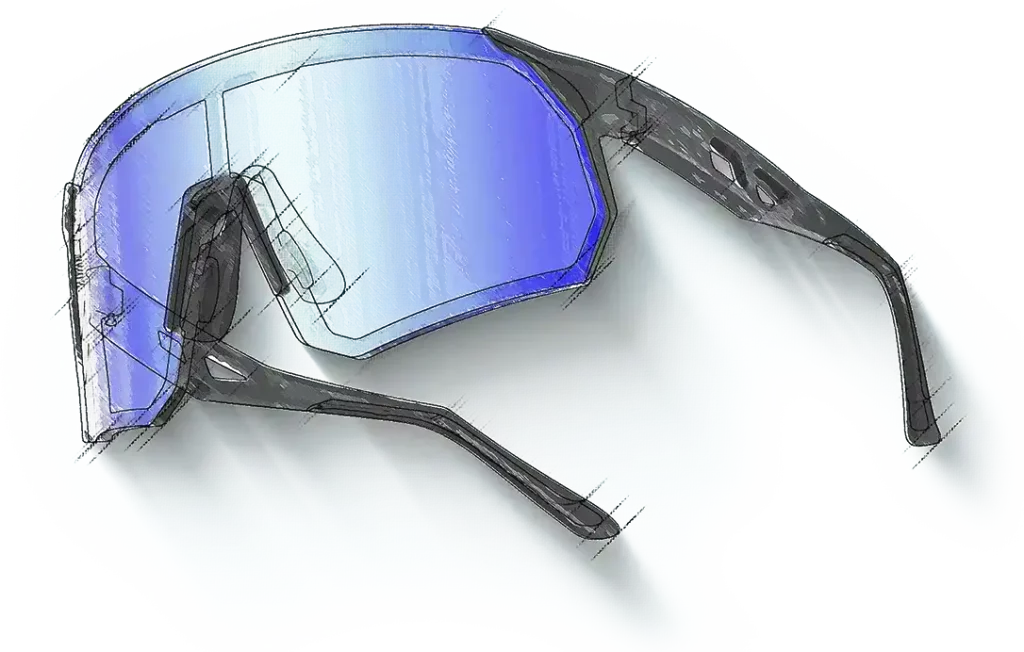
Konzeptentwicklung
Jedes tolle Paar Sonnenbrillen beginnt mit einer Idee. Designer studieren Markttrends und Kundenpräferenzen, um stilvolle und dennoch funktionale Rahmen zu erstellen. Diese Phase umfasst Brainstorming -Formen, Farben, und Funktionen, Von übergroßen prominenten inspirierten Designs bis hin zu schlank, Sportliche Stile.
2D- und 3D -Zeichnungen
Sobald das Konzept abgeschlossen ist, Designer erstellen 2D -Skizzen und digitale 3D -Modelle. Diese detaillierten Zeichnungen helfen dabei, die Sonnenbrille aus jedem Winkel zu visualisieren, Gewährleistung sowohl Ästhetik als auch Komfort.
Schimmelherstellung
Bevor die Massenproduktion beginnt, Eine qualitativ hochwertige Sport -Sonnenbrille -Lieferant Erstellen Sie Formen basierend auf den 3D -Modellen. Diese Formen sind wichtig für die Gestaltung von Rahmenmaterialien und die Gewährleistung der Konsistenz in der Produktion.
Materialauswahl
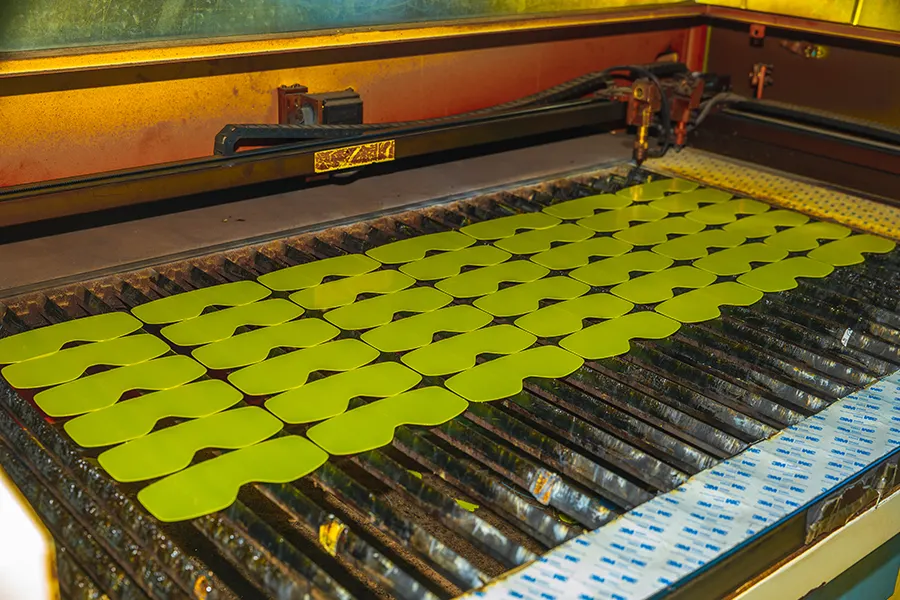
Die Auswahl der richtigen Sonnenbrille ist der Schlüssel zur Haltbarkeit, Gewicht, und Komfort. Die beiden Hauptkomponenten - Rahmen und Linsen - werden in verschiedenen Materialien geliefert.
Rahmenmaterialien
Frames können aus Kunststoff hergestellt werden, Metall, oder eine Kombination von beidem.
- Plastikrahmen: Acetat und Nylon sind beliebte Entscheidungen. Acetat bietet lebendige Farboptionen und Flexibilität, Während Nylon aufgrund seiner Aufprallfestigkeit für Sport -Sonnenbrillen für Sport vorgezogen wird.
- Metallrahmen: Edelstahl- und Titanrahmen bieten eine schlanke, High-End-Look. Titan, insbesondere, ist leicht, stark, und korrosionsbeständige.
Objektivmaterialien
Objektive werden entweder aus Glas oder aus Kunststoff hergestellt, jeweils mit seinen eigenen Vorteilen.
- Glaslinsen: Gefunden in gläser polarisierter Sonnenbrille, Diese Objektive bieten überlegene Klarheit und Kratzerfestigkeit, sind aber etwas schwerer.
- Plastiklinsen: Optionen wie Polycarbonat und CR-39 sind leicht und bruchbeständig, sie zu einer praktischen Wahl für den täglichen Kleidung machen.
Rahmenherstellungsprozess
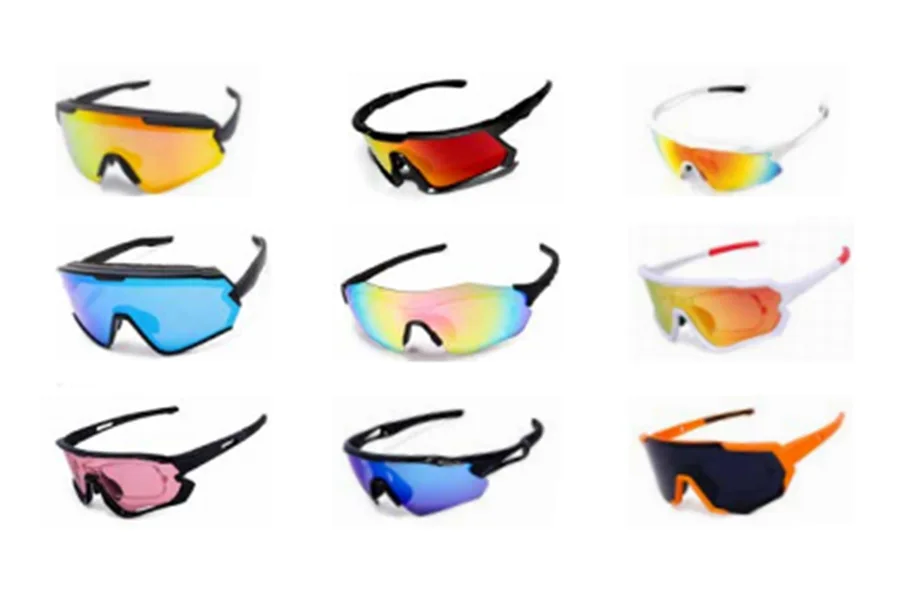
Der Rahmen ist die Grundlage für jedes Paar Sonnenbrillen. Es bestimmt nicht nur die Ästhetik, sondern wirkt sich auch aus dem Komfort aus, Haltbarkeit, und Funktionalität. Die Herstellung hochwertiger Sonnenbrillenrahmen erfordert Präzision, Da jeder Schritt die Stärke und Erscheinung des Endprodukts beeinflusst. Ob aus Acetat, Nylon, Edelstahl, oder Titan, Rahmen durchlaufen mehrere wichtige Prozesse, bevor sie bereit sind, Objektive zu halten.
Injektionsformung
Für Plastikrahmen, Das geschmolzene Material wird unter hohem Druck in Formen injiziert. Nach dem Abkühlen, Die Rahmen behalten ihre beabsichtigte Form bei.
Polieren und Schleifen
Rohe Rahmen haben raue Kanten, die Glättung benötigen. Dies geschieht in drei Phasen:
- Komponentenpolieren: Einzelne Teile werden vor dem Zusammenbau poliert.
- Halbfeindliches Polieren: Frames unterziehen sich einer weiteren Runde der Verfeinerung.
- Endgültiges Polieren: Ein endgültiger Buffing -Prozess gibt Frames ihren glänzenden oder matten Finish.
Reinigung und Trocknen
Vor dem Färben, Frames werden gründlich gereinigt und getrocknet, um Staub oder Schmutz zu entfernen.
Färbung und Beschichtung
Rahmen erhalten ihre endgültige Farbe und Muster mit verschiedenen Techniken:
- Sprühmalerei: Ein kontrolliertes Spray fügt eine gleichmäßige Farbe hinzu.
- Wassertransferdruck: Wird für komplexe Muster wie Holzkorn oder Tarnung verwendet.
- Wärmeübertragungsdruck: Stellt sicher, dass langlebige Drucke, die im Laufe der Zeit nicht verblassen.
Objektivherstellungsprozess

Der Objektivherstellungsprozess ist ein präziser und mehrstufiger Betrieb, der sicherstellt, dass das Endprodukt sowohl optische Klarheit als auch Haltbarkeit liefert. Die folgenden Phasen konzentrieren sich auf Materialfarbe, Beschichtungsbehandlungen, und Schneiden/Gestalten, Jeder, der zur Leistung und der ästhetischen Qualität des Objektivs beiträgt.
Materialfarbe
Die Objektive sind in verschiedenen Farbtönen gefärbt, um ästhetische Anziehungskraft und funktionelle Vorteile wie Blendeminderung zu erzielen.
Beschichtungsbehandlungen
Eine Vielzahl von Beschichtungen verbessern die Objektivleistung:
- UV -Schutzbeschichtung: Blöcke schädliche UVA- und UVB -Strahlen.
- Polarisierte Beschichtung: In polarisierter Glaslinsen -Sonnenbrille gefunden, Diese Schicht reduziert den Blick von reflektierenden Oberflächen wie Wasser und Straßen.
- Anti-reflektierende Beschichtung: Minimiert Reflexionen, um die Sichtbarkeit zu verbessern.
Schneiden und Formen
Einmal beschichtet, Objektive werden in präzise Formen geschnitten, die perfekt in Frames passen.
Montagestufe
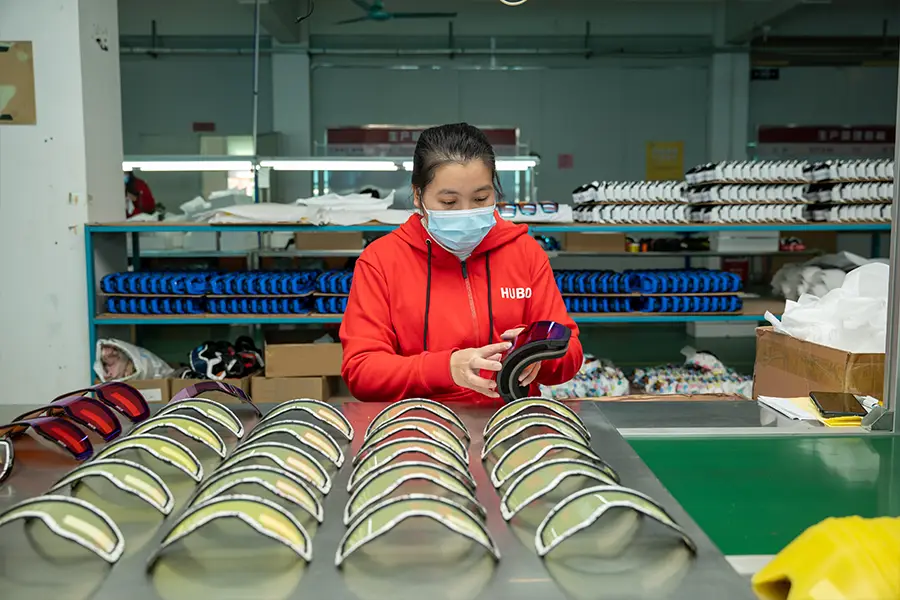
Die Montagestufe ist der letzte Schritt im Objektivherstellungsprozess, wo alle Komponenten zusammengebracht werden, um eine Funktion zu erstellen, stilvoll, und langlebiges Brillenpaar. In dieser Phase wird der Rahmen und die Tempel zusammengestellt, Installieren der Objektive, und Hinzufügen der endgültigen Brandingelemente.
Rahmen- und Tempelbaugruppe
Der Rahmen und die Tempel (Waffen) werden mit winzigen Schrauben oder flexiblen Scharnchen zur Einstellbarkeit verbunden.
Linseninstallation
Objektive werden sorgfältig in die Rahmen eingefügt. In High-End-Modellen wie der polarisierten Glasbrille, Dies erfordert Präzision, um das Kratzen zu vermeiden.
Logodruck
Die endgültige Branding -Touch - Company -Logos oder Modellnummern - werden auf den Rahmen oder das Objektiv geätzt.
Qualitätskontrolle
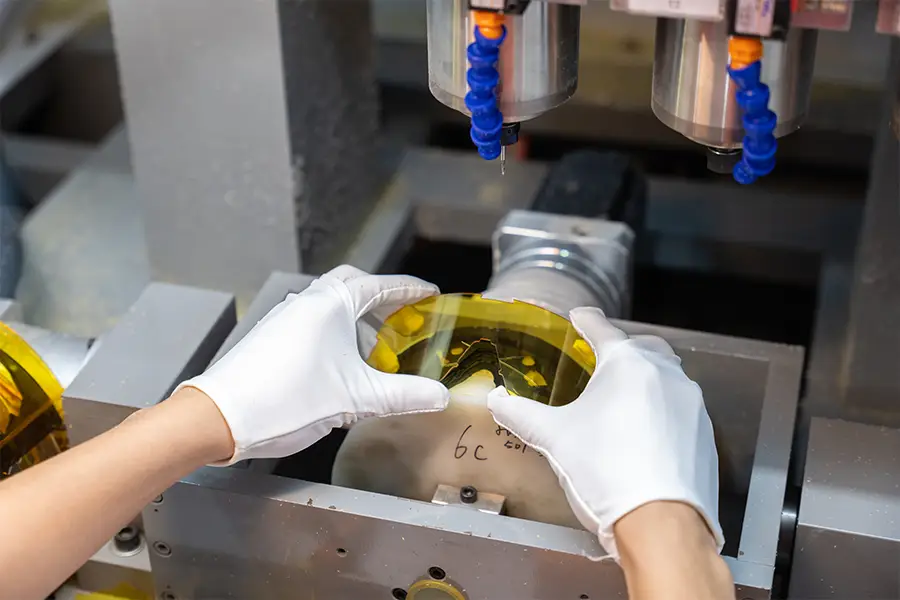
Qualitätskontrolle ist ein entscheidender Schritt in der Sonnenbrille Herstellungsprozess, Stellen Sie sicher, dass jedes Sonnenbrillen die Branchenstandards für die Leistung entspricht, Haltbarkeit, und Ästhetik.
Dimensionale Inspektion
Die dimensionale Inspektion ist wichtig, um sicherzustellen, dass jedes Sonnenbrillenpaar an den Entwurfspezifikationen haftet, einen einheitlichen Passform- und hochwertigen Build bieten.
Visuelle Inspektion
Die visuelle Inspektionsphase ist ein kritischer Bestandteil der Qualitätskontrolle, Konzentration auf die allgemeinen ästhetischen und visuellen Unvollkommenheiten, die die Attraktivität der Sonnenbrille beeinträchtigen könnten.
Funktionstests
Funktionelle Tests beinhalten eine Reihe von Bewertungen, um zu bestätigen, dass die Sonnenbrille unter normalem Verschleiß gut funktioniert, Bereitstellung von Haltbarkeit, Komfort, und Schutz. Im Folgenden finden Sie die wichtigsten Funktionstests, die in dieser Phase angewendet wurden:
- Schlagfestigkeitstest: Überprüft, ob Objekte zufälligen Tropfen standhalten können.
- UV -Schutztest: Bestätigt, dass Linsen schädliche UV -Strahlen effektiv blockieren.
Verpackung und Versand

Die Verpackung und die Versandstufe sind entscheidend dafür, dass die Sonnenbrille sicher und in makellosen Zustand sein Ziel erreicht, und tragen gleichzeitig zum Image der Marke bei. Diese Phase beinhaltet sorgfältiges Verpackungsdesign, Materialauswahl, und effiziente Transportprozesse.
Verpackungsdesign
Sonnenbrillen werden in Schutzfällen platziert, Manchmal mit zusätzlichen Zubehör wie Mikrofaser -Reinigungsstüchern.
Auswahl der Verpackungsmaterial
Umweltfreundliche Materialien werden inzwischen häufig verwendet, um die Umweltauswirkungen zu verringern.
Transport und Verteilung
Nach der Verpackung, Sonnenbrillen werden weltweit an Einzelhändler und Händler verschifft.
Handgefertigt vs. Maschinenproduktion
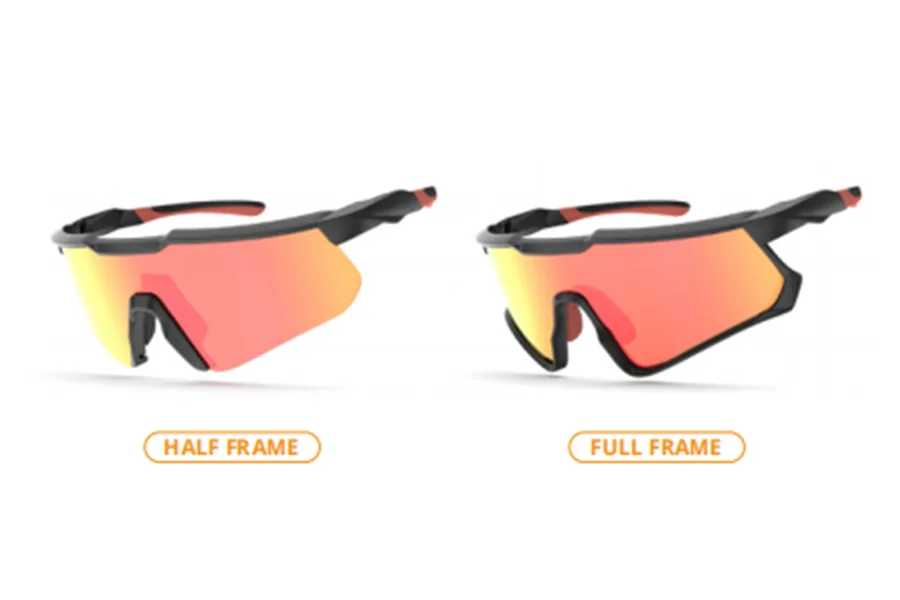
Die Produktionsmethode, die für die Erstellung von Sonnenbrillen ausgewählt wurde, spielt eine wichtige Rolle bei der Qualität des Endprodukts, kosten, und allgemeine Anziehungskraft. Sowohl die handgefertigte als auch die Maschinenproduktion haben ihre eigenen Vorteile und Herausforderungen, Und einige Marken kombinieren das Beste aus beiden Welten. Hier ist ein ausführlicher Blick auf beide Methoden:
Handgefertigte Sonnenbrille
Handgefertigte Sonnenbrille ist ein Premium -Produkt, das häufig eine qualifizierte Handwerkskunst und die akribische Liebe zum Detail umfasst. Diese Sonnenbrille wird von Handwerkern hergestellt, die traditionelle Techniken verwenden, um zu formen, montieren, und jedes Paar beenden, sie einzigartig und von höchster Qualität machen.
Maschinenproduktion
Maschinenproduktion, Auch als Massenproduktion bekannt, Ist der Prozess der Verwendung automatisierter Maschinen zur Herstellung von Sonnenbrillen in großen Mengen. Mit dieser Methode können Unternehmen konsistent produzieren, Erschwingliche Produkte in einem schnelleren, effizientere Weise.
Auswahl der richtigen Produktionsmethode
Für eine hochwertige Sonnenbrille, Viele Marken kombinieren sowohl handgefertigte als auch maschinelle Prozesse.
High-End vs. Budget Sonnenbrille
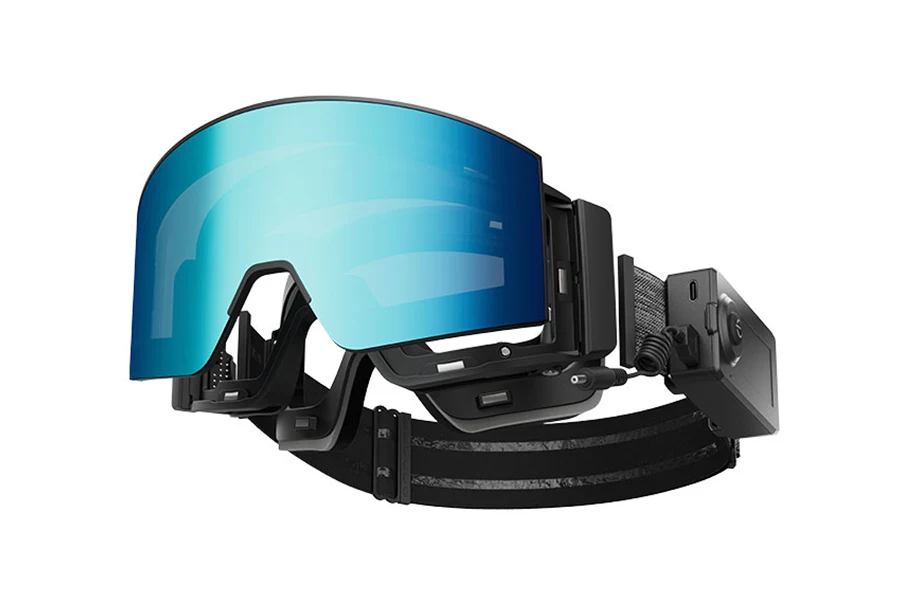
Wenn es um Sonnenbrillen geht, Die Unterschiede zwischen High-End- und Budgetmodellen sind signifikant. Diese Unterschiede spiegeln sich häufig in den verwendeten Materialien wider, Die Komplexität des Herstellungsprozesses, und die gesamten Designelemente, die jede Kategorie auszeichnen. Hier ist ein genauerer Blick auf die Faktoren, die Luxus -Sonnenbrillen von erschwinglicheren Optionen unterscheiden:
Materialqualität
Premium -Sonnenbrillen verwenden überlegene Sonnenbrillenmaterialien wie Titan und polarisierte Glaslinsen.
Fertigungskomplexität
High-End-Marken investieren in fortschrittliche Techniken für Haltbarkeit und Komfort.
Einzigartige Designelemente
Luxus -Sonnenbrillen bieten häufig Designer -Logos, limitierte Editionen, und benutzerdefinierte Gravuren.
Nachhaltige Herstellungspraktiken

Wenn Verbraucher umweltbewusster werden, Viele Sonnenbrillenmarken nehmen zunehmend nachhaltige Fertigungspraktiken ein. Diese Praktiken tragen dazu bei, den ökologischen Produktionspunkt der Produktion zu verringern und gleichzeitig den verantwortungsvollen Verbrauch zu fördern.
Viele Marken konzentrieren sich auf:
- Umweltfreundliche Materialien: Biologisch abbaubare Acetat- und recycelte Metalle.
- Energieeffizienz: Reduzierung der Fabrikemissionen.
- Abfallbewirtschaftung: Recycling überschüssiger Materialien.
Abschluss
Jetzt wissen Sie genau, wie man Sonnenbrillen macht! Von Sonnenbrillenmaterialauswahl bis zur Endmontage, Jeder Schritt ist entscheidend, um eine hochwertige Sonnenbrille zu schaffen. Egal, ob Sie eine polarisierte Sonnenbrille oder trendy Glas -Sonnenbrille bevorzugen, Erschwingliche Designs, Die Handwerkskunst hinter jedem Paar sorgt für Stil, Komfort, und Augenschutz.Next -Schritt ist, das zu lernen Sonnenbrille Einkaufsführer Tiefer Verständnis für Ihre Sonnenbrille -Stil zu haben!
FAQs
Wie schützen Sonnenbrillen vor UV -Strahlen?
Sie verwenden UV-Blockierungsbeschichtungen, um Augenschäden zu verhindern.
Was ist der Unterschied zwischen polarisierten und regulären Objektiven?
Polarisierte Objektive verringern die Blendung, Während reguläre Objektive nicht tun.
Wie kann ich feststellen, ob Sonnenbrillen hochwertig sind?
Suchen Sie nach polarisierten Glaslinsen -Sonnenbrillen, langlebige Materialien, und richtiger UV -Schutz.
Beeinflussen Objektivfarben das Sehvermögen?
Ja! Dunklere Objektive verringern die Helligkeit, während Gelb den Kontrast verstärkt.
Wie oft sollte ich meine Sonnenbrille ersetzen?
Jeder 2-3 Jahre, oder früher, wenn es Schaden gibt.
Wie reinige ich meine Sonnenbrille?
Verwenden Sie ein Mikrofasertuch und vermeiden Sie harte Chemikalien.





















